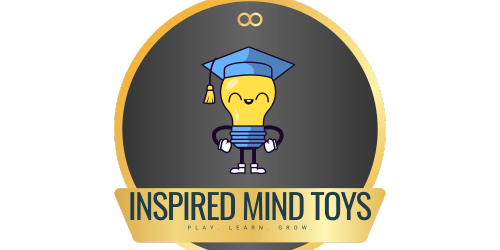In today’s rapidly changing world, it is becoming increasingly important to nurture creative problem-solving skills in children. As the challenges they will face grow more complex, being able to think outside the box and come up with innovative solutions will be a crucial skill. In this article, we will explore some effective strategies that can help foster creative problem-solving skills in children, allowing them to embrace challenges and develop their creative thinking abilities from an early age. From encouraging open-ended play to promoting curiosity and experimentation, these approaches will help set the foundation for lifelong problem-solving skills.
Understanding Creative Problem-solving
Creative problem-solving is a valuable skill that holds significant importance in various aspects of life. Whether it’s finding innovative solutions to everyday challenges or tackling complex problems, having the ability to think creatively allows you to approach situations from a unique perspective. Creative problem-solving involves thinking outside the box, exploring different possibilities, and finding innovative solutions that may not be apparent at first glance.
Significance of creative problem solving skills
Creative problem-solving skills are essential in today’s rapidly changing world. As technology continues to advance and new challenges emerge, the ability to think creatively becomes increasingly valuable. Creative problem solvers are often sought after in the workplace, as they bring fresh ideas and solutions to the table. Furthermore, creative problem-solving skills can enhance personal growth and help individuals overcome obstacles in their personal lives.
Difference between standard and creative problem solving techniques
Standard problem-solving techniques are typically based on established formulas or procedures. These methods often involve following a logical sequence of steps to arrive at a solution. While they can be effective for certain types of problems, standard problem-solving techniques may not always lead to innovative or creative solutions.
On the other hand, creative problem-solving techniques encourage individuals to think beyond the boundaries of traditional problem-solving approaches. These techniques emphasize thinking outside the box, exploring multiple perspectives, and considering unconventional solutions. Creative problem solving involves a degree of risk-taking and experimentation, as it often requires individuals to challenge established norms and explore new possibilities.
Role of creative problem solving in child development
Creative problem solving plays a crucial role in the development of children. When children are encouraged to think creatively and explore innovative solutions, it enhances their cognitive abilities and strengthens their problem-solving skills. Furthermore, creative problem-solving fosters critical thinking, adaptability, and resilience, which are important skills for success in the 21st century.
By promoting creative problem solving in children, we equip them with the ability to approach challenges with confidence, curiosity, and an open mind. This not only enhances their academic performance but also prepares them to navigate the complexities of the real world. Developing creative problem-solving skills in children also nurtures their imagination and helps them become more innovative and adaptable in their thinking.
Identifying Roadblocks to Creativity
While creativity and problem-solving skills are valuable, there are several roadblocks that can hinder their development. It is essential to identify and address these roadblocks to create an environment conducive to creative thinking and problem-solving.
Restrictive education systems
Traditional education systems often prioritize uniformity, conformity, and standardized testing. This can hinder creative problem solving by limiting students’ ability to think outside the box and explore alternative solutions. The emphasis on rote memorization and adherence to set procedures can stifle creativity and discourage students from taking risks.
Overemphasis on perfection
The pursuit of perfection can be a significant roadblock to creative problem solving. When children are constantly pressured to achieve flawless results, they may become afraid of making mistakes or taking risks. This fear can inhibit their ability to think creatively and prevent them from exploring new and innovative solutions.
Lack of curiosity fostering environment
Curiosity is a driving force behind creative problem solving. However, many children do not have access to an environment that nurtures and supports their curiosity. A lack of resources, opportunities for exploration, and a limited exposure to new ideas can stifle curiosity and hinder the development of creative problem-solving skills.
Excessive use of technology and screens
While technology can be a valuable tool for learning and problem-solving, excessive use of screens can hinder creativity. Excessive screen time can limit children’s exposure to real-world experiences, nature, and social interactions, which are vital for fostering creative thinking. It is important to find a balance and ensure that children have ample opportunities for hands-on, experiential learning.
Creating an Environment That Fosters Creativity
Creating an environment that fosters creativity is crucial for nurturing creative problem-solving skills in children. By providing a safe and encouraging environment, children can feel empowered to explore, take risks, and think creatively.
Importance of a safe and encouraging environment
A safe and encouraging environment is essential for creative problem solving. When children feel safe to express their thoughts and ideas without fear of judgment or criticism, they are more likely to take risks and explore new possibilities. An encouraging environment also fosters a growth mindset, where children embrace challenges and view mistakes as opportunities for learning.
Creating space for creativity in home and school
Both home and school environments play a vital role in fostering creativity. Parents and educators can create dedicated spaces that encourage creative thinking, such as art corners, science labs, or outdoor areas for exploration. These spaces should be stocked with materials and resources that promote hands-on learning and encourage children to experiment, create, and solve problems in unique and imaginative ways.
Role of nature and outdoor activities in fostering creativity
Nature and outdoor activities provide unique opportunities for creativity and problem-solving. Spending time outdoors allows children to connect with the natural world, engage their senses, and explore their surroundings. Nature-based activities can stimulate curiosity, spark imagination, and provide a rich context for problem-solving. Whether it’s building forts, exploring natural habitats, or conducting experiments, the outdoors offers endless possibilities for creative problem-solving.
Encouraging Curiosity and Exploration
Curiosity is a fundamental aspect of creative problem solving. Fostering curiosity in children is key to developing their creative thinking skills and encouraging exploration.
Importance of curiosity-driven learning
Curiosity-driven learning enables children to actively seek knowledge, ask questions, and explore their interests. By following their innate curiosity, children develop a deep sense of engagement, motivation, and ownership over their learning. Curiosity keeps the mind open to new ideas and possibilities, fueling creative problem solving.
Ways to fuel curiosity in children
There are several strategies to fuel curiosity in children. Encouraging children to ask questions, explore their interests, and pursue their own inquiries helps cultivate curiosity. Providing resources such as books, documentaries, and hands-on materials also supports their curiosity-driven learning. Additionally, allowing children to pursue projects of their own choosing and giving them opportunities to share their findings fosters a sense of curiosity and ownership over their learning.
Inspiring exploration through open-ended questions and activities
Open-ended questions and activities stimulate curiosity and encourage children to explore different possibilities. Instead of asking closed-ended questions that have a single correct answer, parents and educators can pose questions that require critical thinking and divergent responses. Open-ended activities, such as building structures with blocks or creating art without specific instructions, allow children to exercise their creativity and problem-solving skills.
Integrating Creative Problem-solving in Education
Education plays a vital role in fostering creative problem-solving skills in children. Teachers can incorporate various strategies and activities to promote creative thinking and problem solving in the classroom.
Role of teachers in fostering creative problem solving
Teachers play a crucial role in fostering creative problem solving by creating a supportive learning environment, encouraging critical thinking, and providing opportunities for hands-on learning. By valuing and nurturing creativity, teachers can inspire students to think creatively, explore different perspectives, and develop innovative solutions.
Activities that promote creative thinking in the classroom
There are numerous activities that promote creative thinking in the classroom. Brainstorming sessions, group discussions, and collaborative projects encourage students to think creatively and consider different viewpoints. Problem-solving activities that involve real-world scenarios or open-ended challenges allow students to apply their creative problem-solving skills in practical situations. Additionally, incorporating arts and crafts, music, and drama into the curriculum provides opportunities for creative expression and problem-solving.
How to integrate creative problem-solving tasks in curriculum
Integrating creative problem-solving tasks in the curriculum requires careful planning and consideration. Teachers can incorporate open-ended questions, hands-on experiments, and project-based learning into their lessons. Providing opportunities for students to explore real-world problems, work collaboratively, and present their solutions fosters creativity and problem-solving skills. By integrating creative problem-solving tasks across subject areas, teachers can ensure that children develop these skills holistically.
Role of Play in Fostering Creative Problem-solving
Play is a powerful tool for fostering creative problem-solving skills in children. Through play, children engage in imaginative and open-ended activities that promote exploration, collaboration, and critical thinking.
Significance of play-based learning
Play-based learning is crucial for the development of creative problem-solving skills. When children engage in free play, they have the opportunity to explore their interests, experiment with different solutions, and learn from their mistakes. Play allows children to approach problems with flexibility, take on different roles, and develop their problem-solving abilities in a non-structured and enjoyable setting.
Types of games that foster creativity
Various types of games can foster creativity and problem-solving. Building and construction games, such as Lego or block play, encourage children to think creatively, plan, and solve problems as they construct and design. Pretend play and role-playing games allow children to explore different perspectives and develop their problem-solving skills through imaginative scenarios. Board games and puzzles also require critical thinking, strategic planning, and creative problem-solving.
How to make free play time productive for creative problem-solving
To make free play time productive for creative problem-solving, it is important to provide children with a variety of open-ended materials and opportunities for exploration. Toys, art supplies, and materials such as rocks, sticks, and recycled objects can inspire children to create, problem-solve, and think imaginatively. Allowing children to engage in unstructured play without excessive adult intervention encourages them to take initiative, explore their ideas, and find their own creative solutions.
Importance of Art and Creativity in Problem-solving
Art and creativity play a significant role in problem-solving. By engaging in artistic activities, children develop critical thinking skills, learn to think outside the box, and find alternative solutions to challenges.
How art helps in problem-solving
Art helps in problem-solving by encouraging individuals to explore different perspectives and think creatively. Through artistic expression, children learn to visualize ideas, experiment with different materials, and find innovative solutions to creative challenges. The process of creating art often involves making decisions, solving technical problems, and adapting to unexpected outcomes, which are skills transferable to various problem-solving situations.
Activities that combine art and problem-solving
There are numerous activities that combine art and problem-solving. For example, asking children to create a sculpture or collage using specific materials can challenge them to think creatively and problem-solve as they consider how to manipulate the materials to achieve their desired outcome. Engaging in community art projects or designing functional objects, such as creating a bridge out of recycled materials, requires problem-solving skills and encourages creative and innovative thinking.
Ways to introduce art-based problem-solving exercises
Introducing art-based problem-solving exercises can be done by incorporating art into various learning activities. For instance, combining art and science by asking children to create a model of a plant cell using artistic materials can foster problem-solving skills. Integrating art into storytelling activities, where children can illustrate their own stories, promotes creative problem-solving as they find visual solutions to represent their ideas. By merging art with other subjects, educators can create opportunities for children to develop problem-solving skills in a creative and engaging manner.
Boosting Confidence for Creative Problem-solving
Confidence plays a crucial role in creative problem solving. When children feel confident in their abilities, they are more likely to take risks, think creatively, and approach challenges with determination.
Why confidence is crucial for problem-solving
Confidence is crucial for problem-solving as it empowers individuals to trust their abilities and pursue innovative solutions. When children have confidence in themselves, they have the courage to think outside the box, embrace challenges, and persevere through obstacles. Confidence fosters resilience, adaptability, and the willingness to take risks, all of which are essential for creative problem solving.
Ways to boost a child’s confidence in their abilities
There are several ways to boost a child’s confidence in their problem-solving abilities. Providing them with opportunities to succeed and experience small wins builds confidence gradually. Encouraging children to try new things, take appropriate risks, and celebrate their efforts rather than solely focusing on the outcome helps them develop a growth mindset and believe in their problem-solving skills. Recognizing and praising their unique strengths and individual successes also boosts their confidence and motivates them to embrace creative problem-solving.
Role of praise and positive reinforcement
Praise and positive reinforcement play a significant role in boosting a child’s confidence. When children receive genuine praise and recognition for their efforts and problem-solving skills, it reinforces their belief in themselves. Offering specific feedback, focusing on their progress, and acknowledging their creative thinking and problem-solving strategies helps children understand the value of their ideas and efforts, leading to increased confidence and a willingness to continue exploring creative problem-solving.
Helping Children Find Creative Solutions
Helping children find creative solutions involves guiding them without giving them answers, teaching resilience and persistence, and encouraging divergent thinking.
Guiding children without giving them answers
When children face challenges, it is important to guide them without providing immediate answers. Instead of solving problems for them, parents and educators can ask open-ended questions that encourage critical thinking, problem-solving, and creativity. By guiding children through a series of thought-provoking questions, they can develop their own problem-solving strategies and find creative solutions independently.
Teaching resilience and persistence
Resilience and persistence are integral to creative problem-solving. Children should be taught that setbacks and failures are part of the learning process and an opportunity to grow. Encouraging a growth mindset, which emphasizes the belief that abilities and intelligence can be developed through effort and practice, helps children understand the value of persistence and resilience. By teaching them to embrace challenges, learn from failures, and adapt their approaches, children develop the perseverance needed to find creative solutions.
How to encourage divergent thinking and multiple solutions
Encouraging divergent thinking involves valuing and nurturing different ideas and perspectives. Instead of seeking a single correct answer, parents and educators can encourage children to generate multiple solutions to a problem. Divergent thinking exercises, such as brainstorming sessions or ideation activities, allow children to explore various possibilities, challenge conventional thinking, and consider alternative approaches. By promoting divergent thinking, children develop their creative problem-solving skills and learn to appreciate the value of varied perspectives.
Case Studies of Creative Problem-solving in Action
Case studies provide real-life examples of creative problem-solving by children, offering inspiration and insights into different problem-solving techniques and approaches.
Real-life examples of creative problem-solving by children
There are numerous real-life examples of creative problem-solving by children that inspire and showcase their ingenuity. For instance, a group of students developed an innovative waste management system for their school by repurposing discarded materials and implementing recycling initiatives. Another example is a young inventor who designed a low-cost, portable water filtration system to provide clean drinking water to communities in need. These stories highlight the power of creative problem-solving and demonstrate how children can make a positive impact through their innovative solutions.
Inspirational stories that could motivate children
Sharing inspirational stories of creative problem-solving can motivate children to think creatively and believe in their own problem-solving abilities. Stories of famous inventors, scientists, artists, or entrepreneurs who overcame challenges through creative thinking can inspire children to explore their own ideas, dream big, and find innovative solutions to problems they encounter. Hearing about the successes and failures of others helps children understand that creative problem-solving is a journey that requires perseverance, resilience, and a willingness to think differently.
Comparing different problem-solving techniques through cases
Comparing different problem-solving techniques through case studies allows children to understand and appreciate the diversity of approaches to problem-solving. By exploring how individuals tackle problems using creativity, critical thinking, and perseverance, children can learn from different problem-solving strategies and apply them to their own challenges. Comparing different methods also highlights the importance of adaptability and the willingness to explore multiple solutions in creative problem-solving.
In conclusion, fostering creative problem-solving skills in children is essential for their personal and academic growth. By understanding the significance of creative problem-solving, identifying roadblocks to creativity, creating an environment that fosters creativity, encouraging curiosity and exploration, integrating creative problem-solving in education, recognizing the role of play, and emphasizing the importance of art, confidence, and helping children find creative solutions, we can empower children to become innovative thinkers, effective problem solvers, and proactive contributors to their communities and the world.
Check out this article on Choosing the right educational toys for creative problem solving










